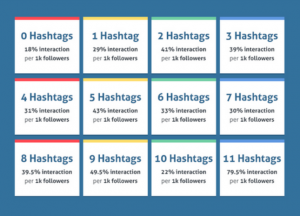Ask 10 different marketers what engagement means and you’ll get 10 different answers. Furthermore, the word engagement gets used loosely in the content marketing world, which only adds to the confusion.
When engagement is backed by a specific goal and is aimed at a niche audience, that’s when the relevancy kicks in and content clicks with that audience. Sounds simple, right? That’s also the where the challenge lies.
Engagement With Purpose
“The challenge is that you can’t seed engagement,” said Jay Baer, author of “Youtility” and President of Convince & Convert. “Engagement is not a currency. And often I think, unfortunately, it is thought of as such. We hold up engagement as if it’s somehow a business metric. And it’s not. You cannot pay employees with retweets. So engagement has to be a means to an end. You have to be engaging for some greater purpose otherwise you’re just wasting time and money.“
What’s tricky is engagement with a purpose. Content marketers hope engagement leads to actions such as email newsletter sign-ups or someone buying their company’s product or service.
“Ultimately, the Holy Grail is engagement that leads to some other behavior. Because again, engagement is a means to an end,” Baer said. “So engagement with a purpose is really what we’re trying to achieve, and that’s the hurdle that a lot of companies have not cleared yet.”
Cutting Through the Clutter
Why is it so difficult? Well, cutting through the noise is exactly the crux of the issue. Baer stressed that your company is not just competing for attention from other companies online and in social media, but they’re competing with the people we love, which doesn’t happen offline. For instance on Facebook, he’ll see something from his wife and next to that will be something from a company.On the other hand, if he’s driving down a highway, he won’t see a billboard for a company next to a billboard for his wife. The bottom line is that the competitive nature of social media, email and other digital marketing is tough.
“Nobody has ever said, ‘You know, what my favorite part of social media is? The fact that companies participate.’ Nobody has ever said that,” Baer said. When it’s put that way, you can see how silly that sounds. That’s why purpose and relevancy matter so much. But what cuts through the content marketing noise is usefulness.
“The key to breaking through that — what I would call an invitation avalanche — is to, in my estimation, be massively useful,” Baer said. “That’s really where my book came from. The word ‘youtility’ came from the concept … Hey, you know, what marketing is really, really hard now. So what do we do? I believe the solution is to create content to do things that are so useful, so relevant, that they do break through.”
Content That Scales
How does content scale from project to project? “Individual engagements don’t scale, but collectively you can achieve scale. What I mean by that is good content, good social, good anything that is useful, that is relevant is going to win hearts and minds one at a time,” he said.
Here’s the success formula. Baer said companies may not win 10,000 hearts at one time, but they can win 10,000 hearts and minds one at a time.“Give one person something that they really care about and show that thing to a bunch of different people. And you see that every day with useful content that becomes massively successful just because it is so useful,” he said.
Success In Usefulness
Baer mentioned Lowes’ Fix In Six Vine videos of household tips as an example of utility done well. The Vine has 9.5 million loops and about 20,300 followers. The campaign of 50 videos shot in-house using iPhones has received 15 million impressions, according to a company video.
You have great content, so what? Content needs to prove it has a business-level impact. Baer said that’s where there’s work to be done. Metrics are great, but does the content have an impact on the business? He said there needs to be dollars associated with content goals. For example, does it create customers, does it deflect customer service calls or does it prevent churn and defection?
“The goal is not to be good at content. The goal is to be good at business because of content and those aren’t necessarily the same things. They’re not measured the same way,” he said. “Lots of people are measuring content, but not that many people are measuring the business impact of content. And that’s where we have to get to. That’s the hill we have to climb.“
Business Articles | Business 2 Community
(376)






